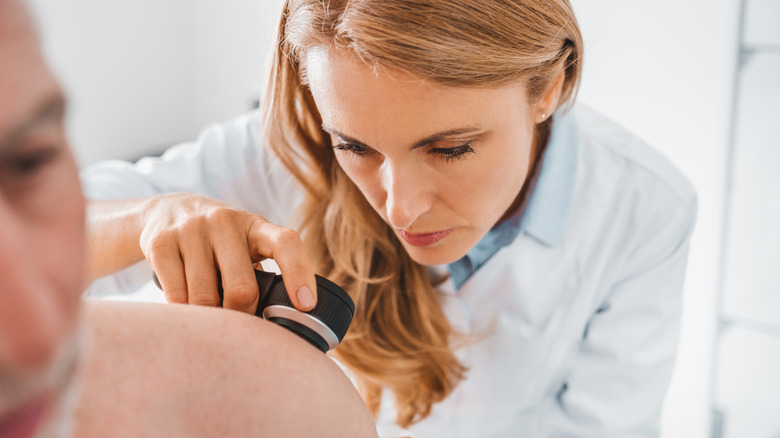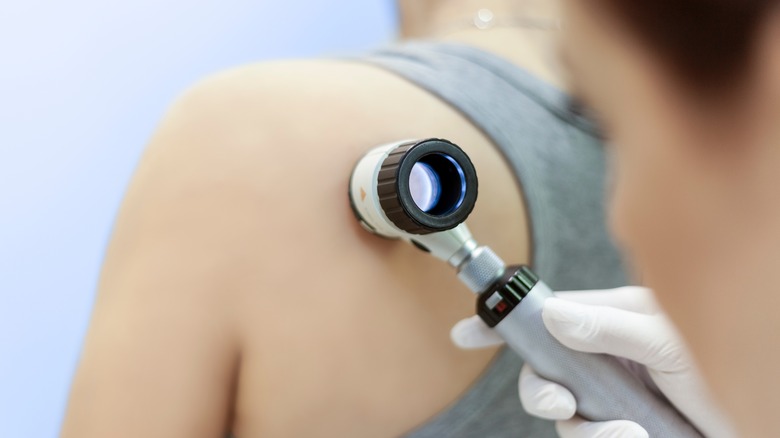A Cancer Vaccine For High-Risk Melanoma Patients May Be Right Around The Corner
There is promising news for people who have a high risk of developing melanoma, a deadly form of skin cancer. According to a statement released on Wednesday, the companies Moderna and Merck will work together to create and market a cancer vaccine that is customized for each patient to treat those with stage-two melanoma (via CNBC). In a phase two trial, the vaccine from Moderna, which is based on their messenger RNA technology, is being examined in conjunction with Merck's Keytruda to treat patients with high-risk melanoma. The businesses anticipate disclosing information in this year's fourth quarter.
The goal of Moderna's vaccination is to stimulate the immune system to release killer T cells that specifically target particular mutations in patients. The monoclonal antibody Keytruda from Merck blocks specific cell proteins from preventing T cells from attacking when given as an injection. Keytruda has already been approved by the Food and Drug Administration to treat multiple types of cancer.
What to know about melanoma
Melanoma is a type of skin cancer that starts in the cells that produce melanin, the pigment that gives skin its color (via The American Cancer Society). Melanoma can occur anywhere on the body, but it most often develops in areas that have had exposure to the sun, such as the face, neck, chest, back, shoulders, and legs. While melanoma is not the most common type of skin cancer, it is the deadliest. If caught early, melanoma can be treated successfully. But if it isn't detected early, it can spread to other parts of the body and become difficult to treat.
The most common symptom of melanoma is a new mole or a change in an existing mole. According to Mayo Clinic, you should see your doctor if you have a mole that is larger than a quarter-inch across, changes in color, size, or shape, bleeds or becomes crusty, or appears to change significantly over time. Other symptoms of melanoma can include a lump under the skin that is hard to see but can be felt, swelling or redness around a mole, or a change in the way a mole looks or feels. The main cause of melanoma is UV exposure from the sun or tanning beds. UV radiation damages the DNA in skin cells and can lead to cancer. This is why it is vital to wear sunscreen every day and reapply it often.


